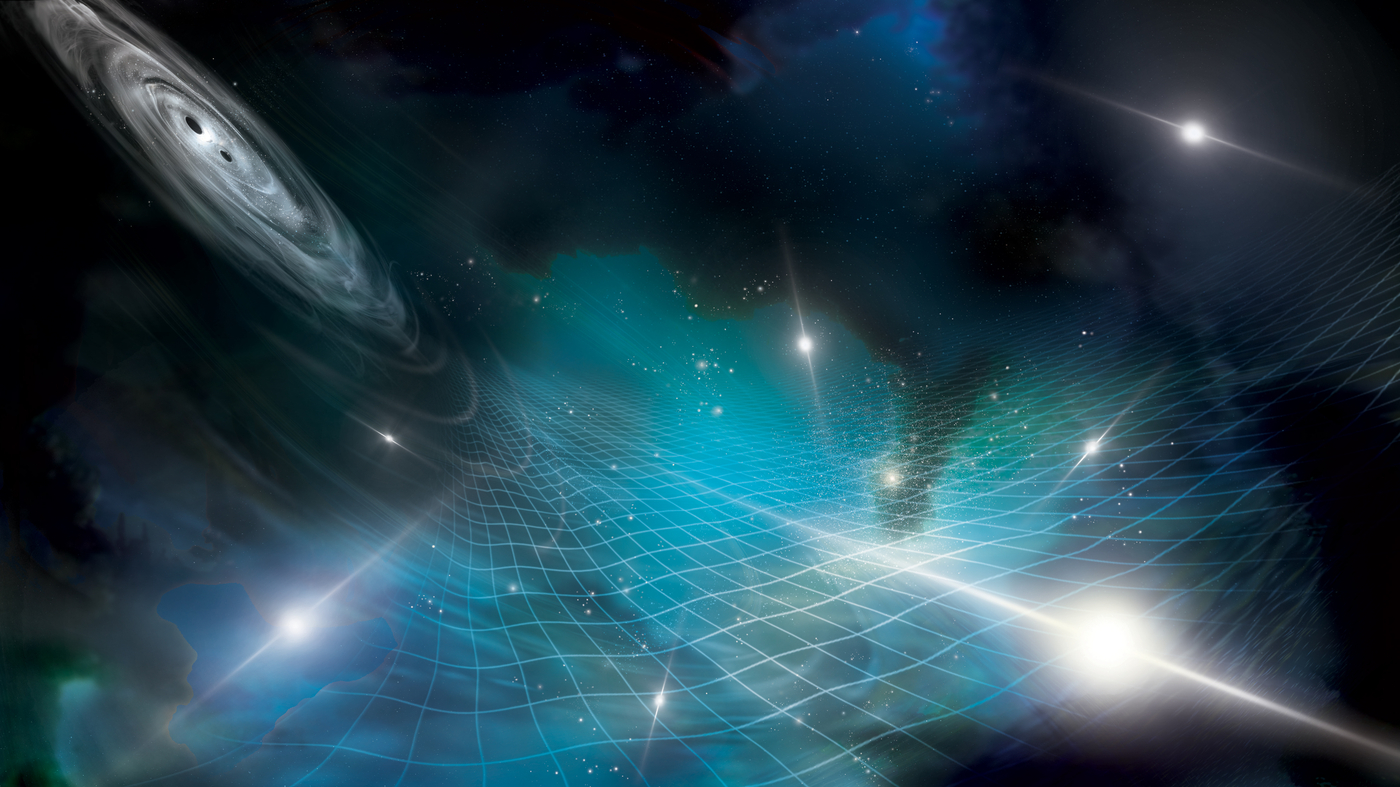
There is finally evidence of low-Frequency Gravitational Waves
How Massive Are Black Holes? Finding Gravitational Waves that Stretched Over a Million Million Miles Through the Milky Way
For the first time physicists have found evidence that low-frequency ripples in space-time are caused by massive objects in the sky. The waves likely came from pairs of black holes and jostled other deep space objects enough to create a signal that scientists could pick up.
When two galaxies merge, the enormous black holes at their centers are thought to come together and circle each other in a spinning dance that sends giant waves spiraling out.
These waves are like the ripples that move through a pond if you toss in a rock — only these waves move through the very fabric of the universe, and researchers have been eager to study them.
“We’ve been on a mission for the last 15 years to find a low-pitched hum of gravitational waves resounding throughout the universe and washing through our galaxy to warp space-time in a measurable way. The NANOGrav chair,Stephen Taylor, said at a press conference on June 27 that their hard work has paid off.
Until now, scientists have only been able to detect gravitational waves created by much smaller black holes. In 2015, a research group registered the waves created by the merger of two black holes that were each about 30 times as massive as the sun.
Jeff Hazboun, an astronomer at Oregon State University, said that the approach worked to find the waves that stretched 2,000 miles. But this wouldn’t work to find the kind of long-wavelength gravitational waves created by supermassive black holes — the kind whose wavelength is 4 light years long, or “20 million million miles,” says Hazboun. To catch wavelengths that long, a detector would have to have “arms” that stretched as long as half of the galaxy.
NANOGrav: Evidence for Space-Time Mixing from a Cosmic Pulsar Timing Analysis of the Gravitational Waves
The NANOGrav team consists of nearly 100 members from the U.S., Canada, and a dozen other countries. “That is one of the most exciting things about this project for me.”
NANOGrav and its international counterparts, like the European Pulsar Timing Array, measured the gravitational waves’ signal by making use of pulsars scattered about the galaxy. pulsars are the cores of massive stars that have collapsed and exploded into smithereens. Some of them rotate hundreds of times per second while beaming radiation from their magnetic axes. Researchers use those pulses as incredibly precise cosmic clocks, pinpointing the pulsars’ locations.
Scientists are able to predict when a pulse will come to Earth with regular intervals. It is possible for them to see small deviations from expected arrival time.
“And if that pulse is a little bit late or a little bit early, then we may be able to attribute that to a gravitational wave passing through,” says Hazboun, who explains that a gravitational wave will stretch or compress space-time, changing the distance that a pulse has to travel to get to Earth.
In their latest analysis, which is being published in a series of papers in The Astrophysical Journal Letters, the researchers looked at data from about 70 pulsars.
What they found is a pattern of deviations from the expected pulsar beam arrival timings that suggests gravitational waves are jiggling space-time as though it’s a vast serving of Jell-O.
The NANOGrav Project: Observing Pulsars with Telescopes in the Light of Gravitational Waves. And what can we learn about gravitational waves?
It’s more like swimming out in a choppy ocean than seeing one wave ROLL in, as a person standing on a beach.
The nature of this kind of evidence for gravitational waves means that certainty grows as more data from pulsars gets collected, she says, adding that a few years ago, the data published by this group seemed to be trending in this direction.
“They had seen very strong evidence for some kind of rumbling in the galaxy. They couldn’t confirm that it was due to gravitational waves, but there was something there,” she says. We have been expecting this for a long time.
The NANOGrav collaboration, which is funded in large part by the National Science Foundation, also plans to merge their findings with similar efforts by researchers overseas, as part of a group called the International Pulsar Timing Array.
It is possible that scientists could use telescopes to observe them and learn more about them. That allowed astronomers to point their telescopes in that direction and witness the faint glow of this never-before-seen event.

